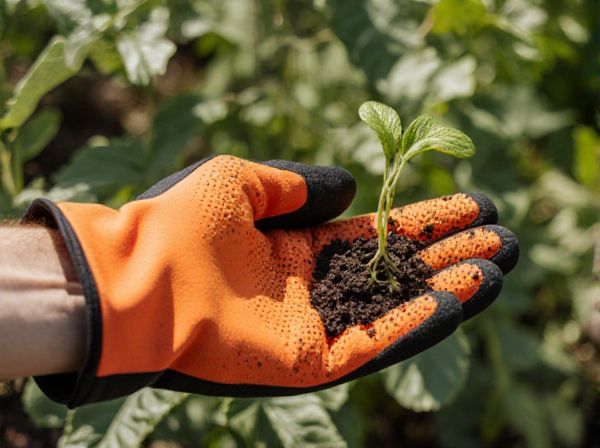
Nicking seeds vs Chipping seeds Illustration
Nicking seeds involves making a small incision on the seed coat to facilitate water absorption and speed up germination, while chipping seeds entails removing a thin layer of the seed coat to achieve the same purpose but often with a greater risk of damaging the embryo. Both techniques enhance seed permeability but differ in precision and potential impact on seed viability. Effective use of nicking or chipping depends on seed type and sensitivity, influencing germination success and seedling vigor.
Table of Comparison
| Aspect | Nicking Seeds | Chipping Seeds |
|---|---|---|
| Definition | Making a small slit on seed coat | Removing a small piece of seed coat |
| Purpose | Enhance water absorption for faster germination | Improve oxygen access and reduce dormancy |
| Seed Coat Damage | Minimal and superficial | More invasive, exposes internal seed parts |
| Germination Speed | Moderately faster than untreated seeds | Significantly faster due to better oxygen flow |
| Risk of Infection | Low risk due to small incision | Higher risk from larger exposed surface |
| Seed Types Best Suited | Hard-coated seeds like Morning Glory, Sweet Pea | Very hard-coated seeds like Mango, Avocado |
| Labor Intensity | Quick and easy | More time-consuming and delicate |
Introduction to Seed Scarification
Seed scarification enhances germination by breaking or weakening the seed coat, allowing water and gases to penetrate. Nicking seeds involves making a small cut or incision on the seed coat, while chipping removes a larger portion of the outer layer. Both methods are effective scarification techniques but vary in intensity and suitability depending on seed hardness and species.
What Is Nicking Seeds?
Nicking seeds involves making a small but precise cut on the seed coat to facilitate water absorption and accelerate germination by overcoming physical dormancy. This method is commonly used for hard-coated seeds such as sweet peas, morning glories, and certain legumes, where the seed coat is impermeable to moisture. Unlike chipping, which removes a larger portion of the seed coat, nicking offers a controlled incision that minimizes damage to the embryo while enhancing seed viability and germination rates.
What Is Chipping Seeds?
Chipping seeds involves carefully removing a small portion of the seed coat to expose the embryo, promoting faster water absorption and quicker germination compared to untreated seeds. This technique is commonly used for larger seeds with hard coats, such as those of tree species like conifers and hardwoods. Effective chipping increases germination rates by bypassing natural dormancy barriers without damaging the vital parts of the seed.
Key Differences: Nicking vs Chipping
Nicking seeds involves making a small incision on the seed coat to enhance water absorption and expedite germination, while chipping seeds entails removing a thin layer of the seed coat, often exposing the endosperm for faster sprouting. Nicking is usually less invasive and preferred for smaller seeds or those with thinner coats, whereas chipping suits larger, harder-coated seeds requiring more intensive scarification. Both techniques improve germination rates by facilitating moisture penetration but differ in their level of seed coat removal and application based on seed type.
Benefits of Nicking Seeds
Nicking seeds involves making a small cut in the seed coat to enhance water absorption and oxygen intake, significantly accelerating germination rates compared to untreated seeds. This technique reduces dormancy periods, leading to more uniform sprouting and stronger seedling development. Nicking is particularly beneficial for hard-coated seeds like beans and peas, improving overall germination success.
Advantages of Chipping Seeds
Chipping seeds enhances germination rates by exposing the embryo more effectively than nicking, allowing for better water absorption and faster sprouting. This technique reduces seed coat damage, minimizing the risk of fungal infections and increasing overall seedling vigor. Chipping seeds is particularly advantageous for hard-coated seeds, improving consistency and uniformity in germination outcomes.
Seed Types Best for Nicking or Chipping
Seeds with hard, impermeable coats such as morning glory, sweet pea, and morning glory benefit most from nicking, which involves making a small cut to facilitate water absorption and speed up germination. Larger, woody seeds like avocado, mango, and some tropical tree species respond better to chipping, where a portion of the seed coat is removed to expose the embryo for quicker sprouting. Selecting the appropriate scarification method based on seed type improves germination rates and ensures healthy seedling development.
Step-by-Step Nicking Guide
Nicking seeds involves creating a small, precise cut on the seed coat to enhance water absorption and accelerate germination, typically performed using a sharp blade or scalpel on hard-coated seeds like mesquite or acacia. Begin by sterilizing the cutting tool and stabilizing the seed on a clean surface before carefully slicing the seed coat without damaging the embryo inside. This method improves germination rates significantly compared to chipping, which removes a larger portion of the seed coat but risks harming the seed's viability if done improperly.
Step-by-Step Chipping Guide
Chipping seeds involves carefully slicing a small portion of the seed coat to expose the embryo, enhancing water absorption and speeding germination. Begin by sterilizing a sharp blade to prevent infection, then gently make a precise cut on the seed's hard outer layer without damaging the inner embryo. After chipping, soak the seeds in water for 12-24 hours before planting to promote optimal moisture uptake and stimulate sprouting.
Safety Tips and Common Mistakes
Nicking seeds involves making a small cut on the seed coat to enhance water absorption but poses a risk of damaging the embryo, so use a sterile blade and avoid cutting too deeply. Chipping seeds requires removing a portion of the seed coat, which can increase germination rates, but excessive removal may expose the seed to fungal infections; applying a fungicide before planting helps prevent this. Common mistakes include applying too much force during nicking or chipping and neglecting to maintain proper moisture and temperature conditions for germination success.
Nicking seeds vs Chipping seeds Infographic

 gardendif.com
gardendif.com